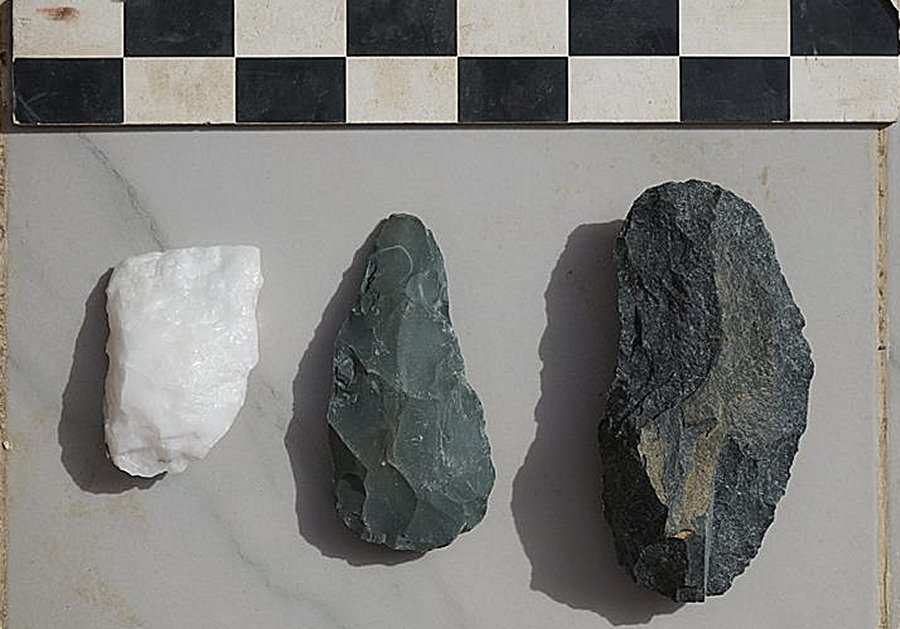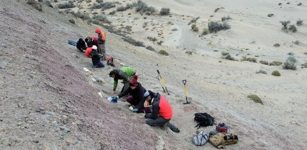Unknown 500,000-Year-Old Migration Route Of Homo Erectus From Africa – Discovered
Conny Waters - AncientPages.com - Stone tools ranging in age from 500,000 to 60,000 years old in gold mines in eastern Sudan, have been discovered by an international team of archaeologists.
The discovery is a proof of existence of an unknown migration route of this species beyond the continent.
 Discoveries in the Eastern Desert also confirm the long coexistence of Homo erectus with Homo sapiens in Africa: it is a period of at least 100,000 years, falling between 300,000 and 200,000 years ago. Both species lived there simultaneously. Image credit:
Discoveries in the Eastern Desert also confirm the long coexistence of Homo erectus with Homo sapiens in Africa: it is a period of at least 100,000 years, falling between 300,000 and 200,000 years ago. Both species lived there simultaneously. Image credit:
"We have found 500,000 years old traces of the presence of Homo erectus- a total of more than a thousand stone products including characteristic hand axes, which proves the existence of a previously unknown migration route of this species beyond the African continent, probably along Red Sea coasts" - the research project leader Prof. Mirosław Masojć from the Institute of Archaeology, University of Wroclaw, said in a press release.
These are by far the oldest traces of human presence in this part of North-East Africa. Up to now, the prevailing views were that H. erectus moved north mainly along the Nile Valley.
The African variety of Homo erectus (upright man) - the ancestor of modern man (Homo sapiens) - appeared in Africa about 1.8 million years ago, from where it quickly migrated to Eurasia. These migrations took place in stages.
The archaeologists find various tools used both by Homo erectus - hand axes and pebble tools, and by Homo sapiens - for example blades. Ancient people used mainly quartzite and volcanic rocks. The age of the tools ranges from more than half a million to 60,000 years. Image credit: M. Jordeczka, Wroclaw University via Science in Poland
The eastern Africa is considered the cradle of humanity. The oldest traces of human activity in the form of stone tools have been discovered along the Great Rift Valley, which stretches from Mozambique through Tanzania to the coast of the Red Sea in the region of Eritrea and Ethiopia.
Today the study area is a flat and inhospitable desert, hundreds of thousands of years ago there were periods of a much more humid climate. There was vegetation and rivers - their dried beds indicate the course towards the north-east, towards the Red Sea.
Discoveries in the Eastern Desert also confirm the long coexistence of Homo erectus with Homo sapiens in Africa: it is a period of at least 100,000 years, between 300,000 and 200,000 years ago. Both species lived there simultaneously, although one gave birth to the other.
 The age of tools vary from more than half a million to 60,000 years. Image credit: Wroclaw University/Facebook
The age of tools vary from more than half a million to 60,000 years. Image credit: Wroclaw University/Facebook
The discovery of over half a million years old stone tools was made accidentally in recent years.
"There was a gold rush in the eastern part of Sudan, in the Eastern Desert, as in many places in the Sahara - people looking for this precious metal in makeshift, open-cast mines. By uncovering successive layers, miners came across tools from several hundred thousand years ago" - says Prof. Masojć.
See also:
So far, researchers have found almost 200 places where Palaeolithic stone products have been preserved. Some of them are located in mines, about 350 km north of Khartoum.
The archaeologists find various tools used both by Homo erectus - hand axes and pebble tools, and by Homo sapiens - for example blades. Ancient people used mainly quartzite and volcanic rocks.
The age of the tools ranges from more than half a million to 60,000 years. "It would not be possible to find these traces without mining operations" - the archaeologist said.
Written by Conny Waters – AncientPages.com Staff Writer





















